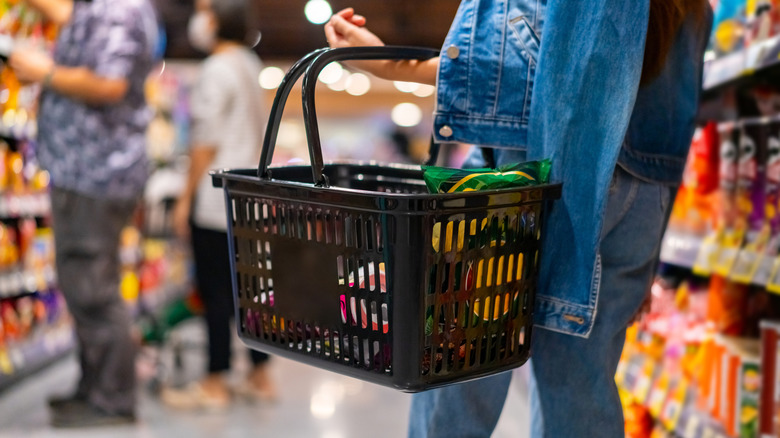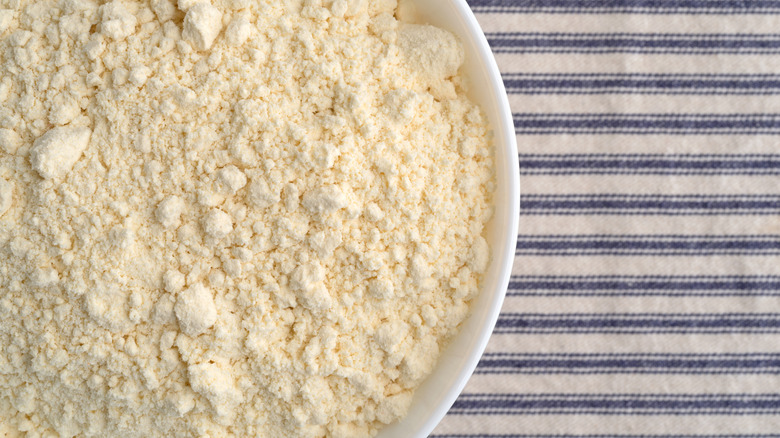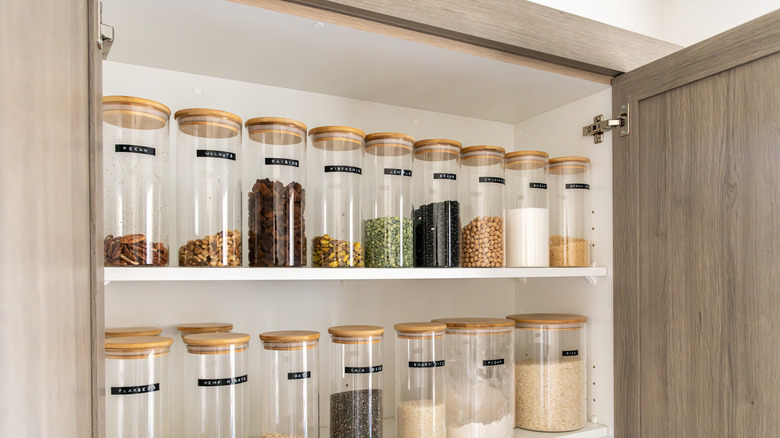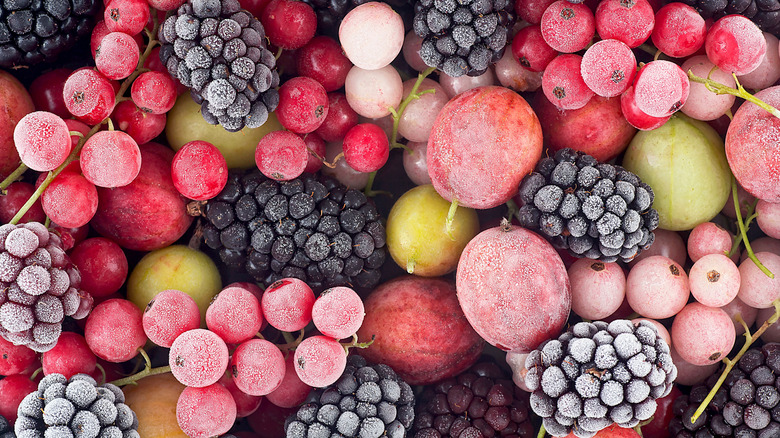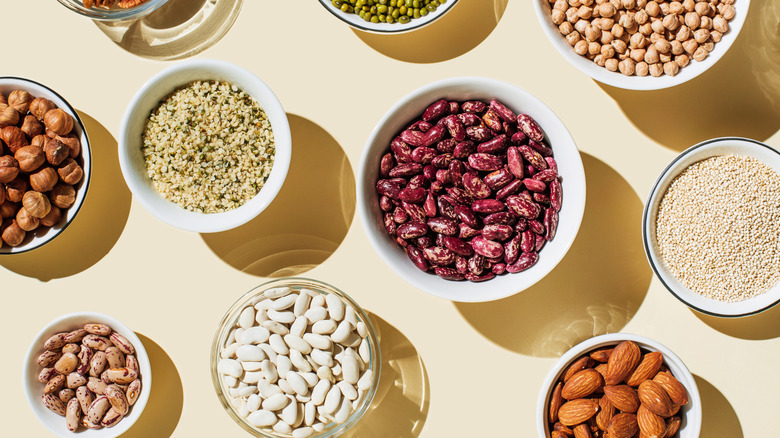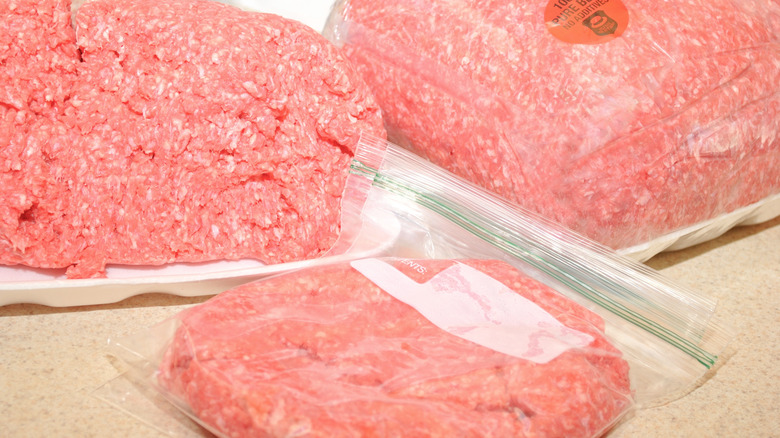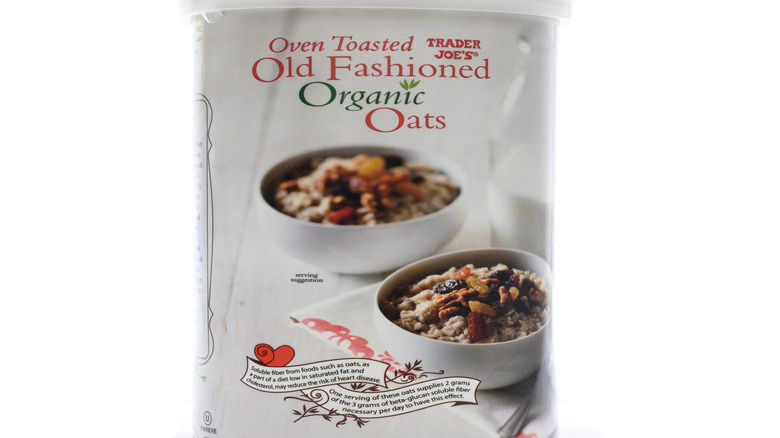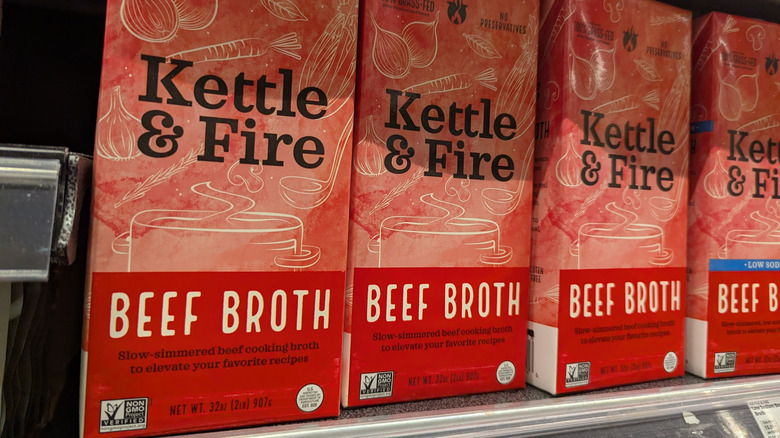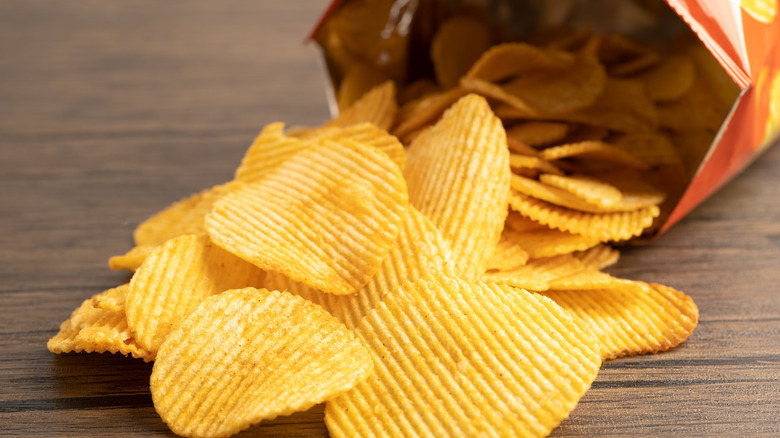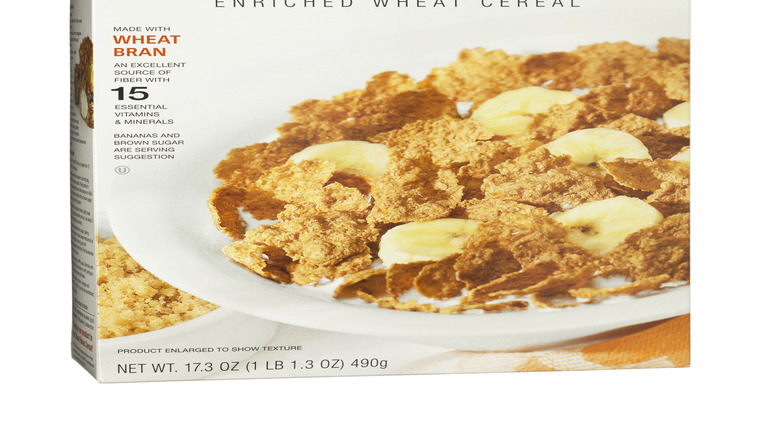Grocery Store Swaps That Will Help You Save Money
If you have hit the grocery store aisles recently, you have probably thought to yourself that food prices seemed high. Turns out that you are not wrong, as data from the U.S. Bureau of Labor and Statistics shows that "food at home" or grocery prices have increased 2.4% over the last year. The increase in food prices may have you looking to cut down your grocery bill, or try and make some savings. But don't panic when you hear that you need to start to "budget," it doesn't automatically mean you have to get rid of all of your favorite food finds. In fact, there are some simple, seemingly small changes you can make to your grocery list that can make a big difference over time.
Read on for some substitutions you can make at the grocery store to save money. While exact product pricing and offerings may vary based on your local store, it is worth trying out these tips to see how much you can really save. You may find yourself with a significantly cheaper grocery bill and some new food obsessions as an added bonus!
Making baked goods from scratch instead of boxed mixes
It's hard to beat the convenience of using a boxed mix. Whether it's muffins or pancakes you are looking to whip up for breakfast or a cake for a special occasion, pre-made mixes can save time and make you feel like you are saving money instead of hitting the bakery. What you may not realize is that you can make your own mix with a lot of pantry staples that you already have at home. For example, forego the pancake mix and instead put together your own homemade pancake mix by combining flour, baking powder, sugar, butter, eggs, and milk. You can ramp up the convenience factor by packaging the dry ingredients together in a glass jar and leaving a note for yourself on what liquid items — and how much — you need to add for quick assembly. The same idea can be utilized for sweet treats, too. Brownies can be easily made at home with the same pantry staples of flour, sugar, baking soda, salt, and perishables like eggs, oil or butter, and some chocolate chips.
Homemade cookies are another one that you can reuse the same pantry staple items for. Not only is making your baked goods from scratch cheaper than buying the mix multiple times, but they also taste better and allow you to control what you put in your food. Avoiding boxed mixes can be a big bonus for those with dietary restrictions or allergies, or those on special diets like gluten-free or plant-based.
Buying in bulk versus smaller individual packages
Big-box stores like Costco or Sam's Club have a cult following, and it isn't hard to see why. Buying in bulk provides the positive combination of not having to replenish items as frequently, while also experiencing some savings for larger quantities. But the impulse buys of Costco may have you second-guessing going to the bulk stores. After all, televisions, playgrounds, and clothes are not usually on the grocery list. What you may not realize is that your regular grocery store may have a bulk section that specializes in foods in larger quantities. Though many of these were dismantled during the pandemic, some stores have started bringing back the self-serve machines in the bulk aisles. The self-serve bulk items contain various shelf-stable items like pasta, beans, nuts, and dried fruits. You can bring your own canisters and fill up as much or as little as you need. It's also eco-friendly to bring reusable containers and cut down on single-use plastic packaging.
Another added benefit of using the bulk section of your store is not wasting food by buying a larger package of an item that you know you won't use before it goes stale. Pricing can typically be found per unit (ounces or pounds), allowing you to compare costs between items. You should keep in mind that there are situations where items in the bulk section are actually more expensive per pound than the packaged options, so if you're trying to save some money, you'll need to look closely at pricing.
Buy frozen fruits and vegetables instead of fresh produce
We have all been there. It is super frustrating when you buy fresh produce to have it go bad before you get to enjoy it. Not only do you waste money on expensive fresh fruits and vegetables (especially if they are out of season) but you also waste food. A money-saving tip can be to opt for buying frozen fruits and vegetables as an alternative to the grocery store produce. Frozen fruits can be a good choice if you have a hankering for a fruit or vegetable out of season, as it will be cheaper and likely high quality, as frozen fruits and vegetables are picked at peak ripeness. This timeframe also preserves the taste of the fruit and means it has the highest concentration of nutrients, making it an easy alternative to the produce section.
Frozen fruits are also typically pre-chopped and peeled, meaning less prep time and more eating time. You have likely noticed that the pre-cut and packaged fruit and vegetable options at your grocery store are pretty pricey, so you pay for the convenience. And if you have a toddler who loves berries, your berry bill is probably high, as fresh raspberries are one of the most expensive fruits. The frozen berries will come cheaper, and if in a larger mixed berry bag, with more variety to enjoy. The frozen varieties make great additions to fresh smoothies, saving you from buying one at the smoothie shop.
Dried beans versus canned bean varieties
Canned beans are a popular, money-saving, shelf-stable protein choice for both vegetarians and meat-eaters alike. But did you know that there are even more cost-saving opportunities with beans? It may look like those canned beans are already cheap, but you typically get fewer servings out of the can than you would with the larger bags of dried beans. By evaluating your price per serving size of dried beans versus the canned beans, you'll find that the dried beans win out.
However, you should know that there is a certain preparation technique required to make dried beans ready to consume. It is recommended to soak dried beans overnight before cooking. But you can take a shortcut using a quick soak method. Another perk of choosing dried beans over canned is that they will last longer and cook to a better texture than the sometimes mushy ones in the can. You also leverage the health benefits by eliminating the sodium-heavy liquid in canned beans. That's not to say that you won't want to add some salt to your dried beans, but you get to control the seasoning level and cook to your own texture preference as opposed to the canned ones that are "ready-to-eat." Just be sure to store your dried beans in an airtight container to prevent spoilage. Some people even prepare their dried beans for cooking in bulk and freeze them for quicker use.
Swapping out costly proteins for cheaper options
It can be tempting to grab the delicious-looking cut of meat fresh from the butcher counter of your grocery store. However, you are likely paying a premium on the high-end cuts of meat (especially beef products). This part of your grocery bill is where you can make some concessions to select some of the typically cheaper cuts of meat, like poultry or pork. You should also take advantage of on-sale meats whenever you can. You may be saying there's no way you can eat 20 chicken breasts in a week, but this is where portioning comes into play. Buy your meats in bulk when you see good prices and freeze them in smaller portions. That way, you have ready-to-cook portioned meats to thaw right at home, not only saving you a trip to the store, but also getting the most out of those sale prices.
Eliminating meat entirely from your grocery list can also have some money-saving results. Plant-based dishes, including proteins like tempeh, legumes, nuts, and lentils, have long been vegetarian favorites, but have been experiencing a spike in popularity for those tightening their wallets, too. Though you will see those plant-based options like Beyond or Impossible at the store, be mindful of the pricing, as they can end up being a bit more costly than other vegetarian protein options.
Buy oats instead of granola or instant oatmeal
Whether it's at home or at a continental breakfast, you have likely enjoyed instant oatmeal. Instant oatmeal is not only convenient to make for a quick breakfast, but it usually comes flavored, too (and can be packed with sugar as a result). To save some money, try buying a large container of old-fashioned oats instead of the box of instant oatmeal packets. These old-fashioned oats have versatility and can be used for traditional hot oatmeal, as well as soaked in milk for overnight oats. Both preparations offer you the flexibility to add your preferred toppings and sweeteners — a big bonus for the picky eaters and health-conscious bunch. You can also grind oats into oat flour for baking (or make some tasty homemade oatmeal cookies). And if you can't spare the extra time to make oatmeal with old-fashioned oats, your store likely has the "instant oats" version that can still save you some dough.
While we're on the topic of oats, granola is another breakfast item that can be secretly pricey. Some of the higher-end brands can run upwards of $10 and are largely made of the same oats you can buy separately in the store for a fraction of the price. Use your old-fashioned oats to make your own homemade granola, adding in the fun toppings that you see in the pre-packaged varieties. If you stick to the generic store brands of old-fashioned oats, your savings will be even more apparent.
Buy bouillon, not boxed broth
Boxed broth is a must on the grocery list, especially during soup season. Aside from soups, broth can be required for many recipes, like pasta dishes or to make flavorful sauces. It would be lovely to make your own homemade broth, but that isn't always an option with time constraints. Instead, you buy the box of broth for your recipe and use the amount required (which may not even be the entire box), leaving the box or can of opened broth in the fridge unused and potentially going to waste. Rather than buying the box or can of broth, try bouillon. This paste, found in chicken, vegetable, beef, and even seafood varieties, is like magic. You just add boiling water to a teaspoon of bouillon to get one cup of broth ready to go in your recipe.
Bouillon is also concentrated compared to broth, so a little can go a long way, meaning you can get many uses out of your jar compared to a one-time use boxed broth. A favorite Costco find can be those big jars of the "Better than Bouillon" brand for the ultimate savings. There is also a flavor element to the bouillon versus broth debate. Bouillion offers some flexibility in adding as much or as little flavor as your palate demands, while store-bought broth is already mixed.
Skip bagged snacks and make your own
Snacks are likely on the grocery list for single households or families with kids of all ages. You may not even realize that a lot of your grocery bill goes toward those individually packaged veggie straws or popcorn bags. While you can argue the ease of throwing the bags of chips into lunches, there is a way you can get the best of both worlds. Preparing your snacks at home and pre-packaging yourself in bulk can save both time and money. For example, buying popcorn kernels in bulk and popping them on the stovetop in a pot (or in a popcorn maker) yields big results for little cost. Plus, you get to customize your toppings with seasonings, and you don't get the extra unhealthy additives that come in store-bought varieties.
Another snack savings opportunity is buying large amounts of nuts and dried fruits instead of individual packets of snacks like trail mix. The initial cost of the bulk ingredients may feel like a lot, but that investment will pay off when you combine and individually package yourself to make your own trail mix or bagged nuts. Smaller portions can be costly, and buying the larger bags saves money while also lasting longer. You can even store leftover nuts in the fridge or freezer to lengthen the shelf life. And if you want to be eco-friendly while saving money, try the reusable snack bags or silicone bags and forego the plastic single-use snack bags.
Buy the generic store brand over the brand names
Brand names get a lot of business due to brand recognition. But in many cases, the generic store brand items can be a seamless but cost-effective swap. You may be paying for the name when your grocery store offers a very similar product. Savings for these generic brands can be as much as 25 to 30% compared to their brand-name counterpart. The clincher is that these products may even be made by the same company, but packaged differently. The brand name can get the flashier packaging and advertising dollars, while the generic brand is store packaging, but the product is actually very similar if not almost exactly the same.
You may also have been led to believe that the generic brands are less in quality or less nutritious. But many grocery giants have started to produce their own specialty brands with an emphasis on healthy foods and high quality. You may see labels like Private Selection or Simple Truth in Kroger's chain stores – both are actually Kroger brands with some special offerings, plus lower prices. Walmart offers its well-known Great Value brand, and it recently launched bettergoods with a focus on plant-based and healthy foods. The list goes on, but while you're at it, compare costs at different grocery stores and choose your shopping loyalty based on prices. Some stores may have different generic brand name offerings at better prices, or you may even find slight differences in product quality.
Shop at your grocery store online instead of in-store
If you are a big victim of the impulse buy while grocery shopping, this tip is for you. Shopping online may seem counterintuitive for groceries (especially when it comes to fresh produce), but hear me out. Shopping online keeps you from making those impulse buys in person. You select your shopping time at your convenience (meaning you aren't shopping while you are hungry and even more impulsive). And if you do find you made some impulse buys from the couch, you can modify your order within a certain timeframe. Many stores offer the ability to place orders through their app or online for curbside pickup. You can try the store's delivery service for a small fee, allowing you to save time and money. For Kroger delivery, you will find that some delivery windows are cheaper than others, allowing you to work that into your budget.
Placing an order for pickup also forces you to meal prep to a certain extent to ensure you have your grocery store staples. Plus, inadvertent overstocking is a non-issue, as you can take inventory of what you already have in the fridge or pantry while you shop at home. While it may be a bit of a time-suck at first getting used to placing the order ahead of time, you may find that your grocery app saves your previous search history and orders. This means a faster, more efficient shopping experience in the long run.
